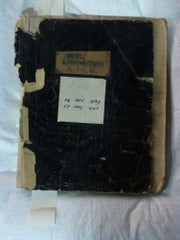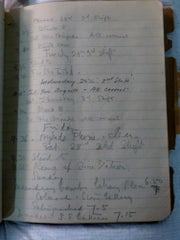The Mother Church
St Paul's Cathedral - an Anglican cathedral in London in which the Bishop of London is resides. The mother church of the London Diocese is the cathedral. It is a Grade I listed building that is located atop Ludgate Hill, the highest point in the City of London.
The earliest church that was built here in AD 604 was dedicated to the apostle Paul. Sir Christopher Wren created the current building, which is a late 17th-century example of English Baroque architecture. Its construction, which was finished during Wren's lifetime, was a crucial aspect of the city's extensive reconstruction effort following the Great Fire of London.
As the location of St. Paul's Cross and Paul's Walk, the previous Gothic cathedral (Old St. Paul's Cathedral), which was mostly destroyed in the Great Fire, served as a focal point for mediaeval and early modern London.
One of London's most well-known and recognisable landmarks is the cathedral. For more than three centuries, its dome has dominated the skyline, encircled by the spires of Wren's City churches. From 1710 to 1963, it held the record for tallest structure in London at 365 feet (111 metres). The dome remains among the tallest in the entire world. After Liverpool Cathedral, St. Paul's is the second-largest church structure in terms of square footage in the United Kingdom.
The Cathedral's congested, six-story buildings often occupied small city streets. The iconic structure, St. Paul's Cathedral, continued to dominate the landscape from a great height. Paternoster Square and Paternoster Row were to the north. Numerous thousands of books were stored in these buildings along historic streets that served as one of the publishing industry's hubs.
The tower of Christchurch Greyfriars is to the northwest, the tower of St. Verdast alias Foster on Foster Lane is to the northeast, and the square tower of St. Augustine on Watling Street is right outside the Cathedral.
With the large warehousing that was still present along the City's river banks, the land sloped down to the River Thames to the south.
Pre-war ariel shot of St Paul's and surrounding streets, showing how crowded the area was.
A German raid occurred on the night of 29th December with an initial wave of pathfinder bombers armed with incendiary bombs and some high explosives targetting the City, followed by a larger second wave of bombers with high explosive bombs, later in the evening.
The Luftwaffe were aiming for a range of strategic targets in the area and St Paul's Cathedral found itself in the firing line. The St. Paul's Watch heard what they described as "a scuttle full of coals being poured on the floor" shortly after 6 o'clock in the evening. This was the sound of incendiary bombs landing all about the Cathedral.
W.R. Matthews, Dean of St. Paul’s - St. Paul’s Cathedral In Wartime.
Water
The Watch now confronted an additional issue, the availability of mains water, which given the sheer quantity and locations of the fires, was going to be a major issue.
Three, 36-inch, and twelve more huge mains were damaged that evening, and the River Thames had a very low tide at a time when water was most required. Fire boats could no longer be used because mud obstructed the hoses and pumps that were drawing water from the river.
Around three hundred pumps were trying to draw water from any accessible source in and around the City by eight o'clock, and the sheer quantity of pumps also had the effect of lowering the atmospheric pressure.
Thames water-tenders and fire-boats in Southwark Reach.
Press Association Images
All external water supplies failed, which had an impact on the Cathedral. The water supplies that had been kept in whatever could be discovered or used during the days of preparation were now all that the Watch had left. Planning that worked out so well-preserved supplies for the stirrup pumps, which were crucial in putting out flames and incendiary bombs in positions on the cathedral's roofs that were extremely difficult to reach. Sandbags and stirrup pumps were now the only tools available for the Cathedral's defence.
The absence of water made it impossible to put out flames. If there had been six buckets of water on hand at the time an incendiary struck the St. Paul's Chapter House, it may have been spared.



In the crypt headquarters for the Watch, a log was kept throughout the war recording the time and details of individual events as they happened, which included the events of 29th December 1940.
Wind
A strong south-west wind was present on the 29th evening. This had the effect of spreading the fires quickly and made it extremely dangerous to put out the fires by blowing heat, smoke, and flaming embers across the Cathedral from the south (there were also reports that charred paper from City offices had been found as far afield as Upminster, Essex after the 29th)

W.R. Matthews, Dean of St. Paul’s - St. Paul’s Cathedral In Wartime.
The Dome
A very weak spot in the Cathedral was always thought to be the Dome. The Dome was not only one of the Cathedral's distinguishing features, but it also posed a significant fire risk. Wren came up with a brilliant plan for the Dome when he designed it.
The Lantern building is located atop the Dome. Wren built three domes since the Dome could not support the Lantern's weight alone. From the Cathedral's floor, one can see the inside Dome.
A second Dome rises above it, which is actually a brick cone structure that supports the weight of the lantern by reaching up to it. A wooden framework holding the lead on the exterior of the dome and sustaining the weight of the dome by wooden beams and joists resting onto the cone and the floor is how the third exterior dome, which we can see from outside the cathedral, is built around this cone.
The iconic photo of St Paul's Cathedral - St Paul's Survives - taken during the Blitz.
The photo was taken from the roof of the Daily Mail newspaper building (Northcliffe House on Carmelite Street) by Herbert Mason. Mason was the chief photographer at the Daily Mail and was on the roof fire watching when he took the picture. Mason described the moment he created the photograph:
I focused at intervals as the great dome loomed up through the smoke... The glare of many fires and sweeping clouds of smoke kept hiding the shape. Then a wind sprang up. Suddenly, the shining cross, dome, and towers stood out like a symbol in the inferno. The scene was unbelievable. In that moment or two, I released my shutter...
Herbert Mason
Any attempt to enter the Dome by an incendiary would give them access to this wooden building, where they could easily start a fire that would swiftly spread to the entire dome.
The Cathedral received a call from Cannon Street Fire Station informing them that the Dome was on fire as the Watch was busy putting out fires all over the roof. A team was sent to deal with this new threat and discovered that although the Dome was not actually on fire, an incendiary bomb was stuck halfway through the lead roof, which was melting, and had not yet entirely pierced the Dome.
View looking over towards Paternoster Square on the evening of the attack. The Chapter House can be seen in flames with the roof lost in the lower part of the photo, just to the left of the statue.
Watch teams were assigned to patrol the Dome, but it was challenging to put out flames there since Watch members had to balance on wooden beams to reach a fire while holding a stirrup pump and pail of water.
Eventually, the bomb was allowed to leave the Dome and land on the Stone Gallery, where it was immediately disarmed. Probably due to insufficient support from the molten lead and an uneven distribution of weight, the weight fell outward rather than in.
Night turns to day
The areas around St. Paul's were on fire by late evening, and the fires were said to have made the area appear to be as light as day. Ave Maria Lane, a tiny street that connects Ludgate Hill and Amen Court, was close by. Firefighters were working in pairs that night to try to put out the fires as the lane was on fire. With the constant threat of explosions, bombings, and the burning buildings' structural failure triggering a catastrophic collapse into the street, Just two firefighters and a hose attempted to manage a long stretch of burning buildings.
This picture was taken at night. The flames from the fires around St. Paul's illuminate the scene. It was said to have been as bright as day. The fire teams working on the nearby buildings are indicated by the cars parked beside the road. Building fires between the Cathedral and the River can be seen to the right, and to the left, Paternoster Row and Cheapside can be seen lit up by fires.
All Clear
The All Clear was surrounded in the late evening despite the City being on fire and the Watch maintaining a close eye on any potential for burning embers extending the fire to the roof of St. Paul's.
Londoners were shocked to find that St. Paul's Cathedral was still standing after the All Clear had been given. The strange visual effect of the Dome of the Cathedral appearing to float on a brilliant sea of cloud, with the colours shifting as the wind blew in different directions, was caused by the billowing smoke and colour produced by the fires.
Although St Paul's Cathedral was spared most of the destruction, many of the streets surrounding it were not so lucky. Here firemen dampen down fires after the raid.
Fox Photos / Stringer / Getty Images https://www.bl.uk
Impact
One of the clergy of St. Paul?s cathedral in London looks at two cherubs standing among the debris and holding their heads as though for protection.
AP Photo
For a variety of reasons, the Cathedral's survival was crucial. There were those that believed the UK was a hopeless cause and unable to withstand the German assault in 1940 because America had not yet joined the conflict. American journalists were already sending dispatches to their US publications informing them that St. Paul's had been lost when the Dome was attacked.
In order to convince the US that the UK would resist the attack and serve as a base for any subsequent attacks on the occupied continent, London's ability to survive the blitz, as well as that of the country as a whole, was essential.
Bomb damage surrounding St Paul's Cathedral after the raid. The extent of the damage can clearly be seen.
Later attacks
Even more serious harm was done to the Cathedral in 1941 by the Luftwaffe bombing of the North Transept. When it hit the roof and exploded, it shook the Dome, pushed the South Transept's south wall outward, and broke every window. The floor of the Cathedral developed a hole through which it was possible to see the Crypt below due to the masonry falling through the vault. Member of the Watch A.S.G. Butler remembered the North Transept explosion as follows:
Damage to the Cathedral Floor caused by the high explosive, which struck the North Transept on 16 April 1941.
Further reading
Sources:
https://alondoninheritance.com/thebombedcity/the-second-great-fire-of-london-29th-december-1940/
W.R. Matthews, Dean of St. Paul’s - St. Paul’s Cathedral In Wartime
https://www.stpauls.co.uk/wartime-damage-and-repair
Press Association Images
Herbert Mason
Cornell University Library
https://pixels.com/featured/a-number-thirteen-bus-along-ludgate-heritage-images.html
National Motor Museum/Heritage Images/Getty Images
https://www.history.com/topics/world-war-ii/world-war-ii-history
Fox Photos / Stringer / Getty Images

















